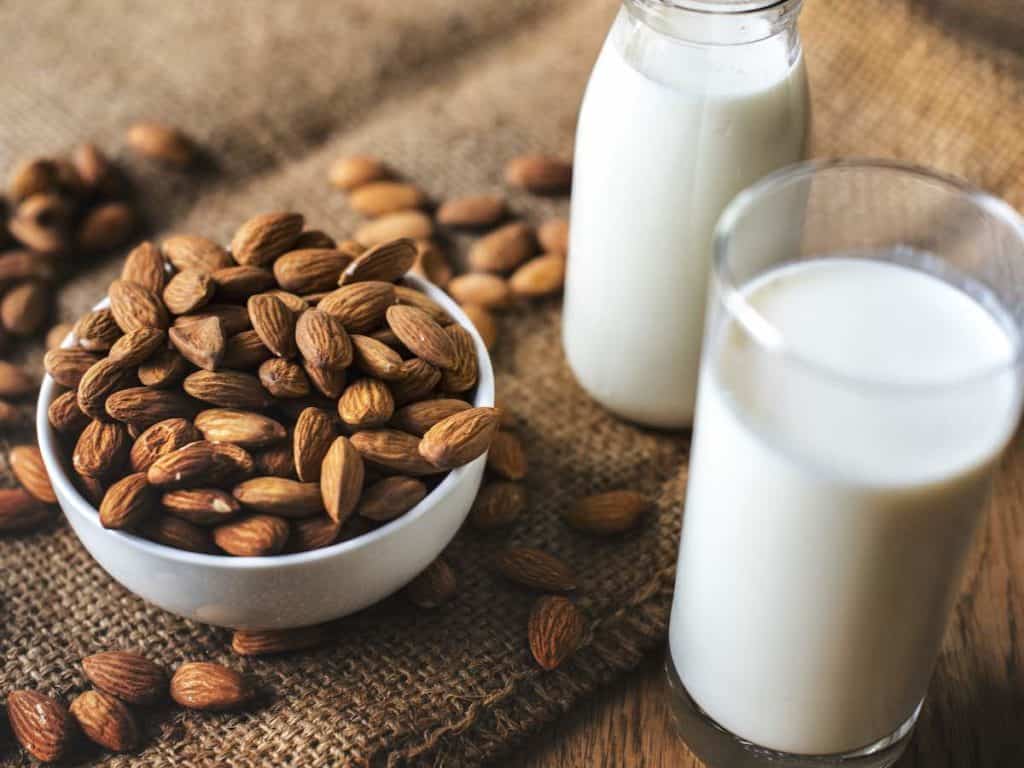Why Does Lactose-Free Milk Taste Sweet
Those of us who are lactose intolerant can opt for plant-based milk or lactose-free milk. But you may have noticed lactose-free milk tends to be sweeter. So why does lactose-free milk taste sweeter?
Lactose is a sugar composed of two other sugars, glucose and galactose. To make lactose-free milk, milk producers add lactase into the milk. Lactase is an enzyme that breaks down lactose to glucose and galactose. Glucose is much sweeter than lactose while galactose is only slightly sweeter. Hence lactose-free milk tastes sweeter.
Besides dairy milk with the lactose broken down, you can also try plant-based milk. Plant-based milk is naturally lactose-free. Here you’ll learn more about dairy and non-dairy lactose-free milk.

Why We Become Lactose Intolerant
We could drink milk when we were babies, so why can’t many of us drink it as adults?
It’s because of lactose. Lactose is a sugar that is found in dairy milk. When we are babies, our body makes the enzyme lactase. Lactase breaks down lactose into its constituents, glucose, and galactose. But as we get older, our body tends to stop making lactase.
Hence, we become unable to digest lactose, and consequently, we become lactose intolerant.
Why our body stops making lactase is a matter of biology. Milk is baby food. It is packed with nutrients that help babies grow. As we get older, we’re able to eat tougher solid foods like meat, fruits, and vegetables. Hence, there’s no biological need to keep consuming milk.
Why Some People Can Consume Dairy
Some people are lucky because they can consume dairy. Their body continues to make lactase. Hence, these people are called lactase persistent. Their bodies learned to continue making lactase.
The likely explanation is their ancestors continued to consume dairy. Sometimes they may have done so out of need. Back then, sometimes milk was one of the few foods available, like in harsh winters when crops can’t grow.
During those harsh times, food was scarce. But the people probably had farm animals like goats and cows. These animals don’t need to eat fresh grass. They can eat hay. Since hay is dried, it can be gathered so it can last through winters.
Besides providing meat, these animals can provide milk to the people. So these people drank milk and ate dairy foods. Eventually, these people’s bodies learned to continue making lactase.
Most people of European descent are lactose persistent. Meanwhile, most people of African and Asian descent are lactose intolerant.
How Lactose-Free Milk Is Made
Scientists can now make the enzyme lactase in the lab. Lactase can then be used as an ingredient in dairy products to predigest the lactose. Hence, we can now have dairy milk and other products that are free of lactose. You can see in the ingredients list of lactose-free milk that lactase is included.
Why Lactose-Free Milk Is Sweeter
Lactose is a sugar that is made by two connected smaller sugars. These two sugars are glucose and galactose. When lactase breaks down lactose, it separates lactose into glucose and galactose.
Of the many sugars that we know, lactose is actually one of the least sweet. Scientists measure sweetness with sucrose, which is table sugar, as the base standard.
Hence, sucrose has a sweetness index of 1.0. Lower and higher numbers mean the sugar is less or more sweet, respectively. Lactose has a sweetness index of only around 0.2.
Meanwhile, glucose has a sweetness index between 0.7 and 0.8. Meaning, glucose is between 3.5 and 4 times sweeter than lactose. In contrast, galactose has a sweetness index of 0.35. It’s not as sweet as glucose, but it’s still 0.75 times sweeter than lactose.
Hence, if you find lactose-free milk to be sweeter, check the ingredients. If you don’t see added sugars, then the sweeter taste is the natural sweetness from the lactose breakdown.
Plant-based Milk Are An Option
Lactose is a sugar that is found in the milk of all mammals. Meanwhile, plants don’t have lactose. Plants are our main source of carbohydrates and sugars, yet they don’t make lactose.
Funny, right?
Consequently, plant-based milk is also a lactose-free option.
Of all the plant-based milk, soy milk is the closest match to dairy milk’s nutritional value. Below are the nutrition facts of a cup (243 g) of typical soy milk. The information below is from the US Department of Agriculture:
- Calories: 131
- Total fat: 4.3 g
- Saturated fat 0.5 g
- Trans fat: 0 g
- Cholesterol: 0 mg
- Total carbohydrates: 15 g
- Dietary fiber: 1.5 g
- Sugar: 10 g
- Protein: 8 g
In contrast, below are the typical nutrition facts of a cup (249 g) of cow’s milk that is 3.25% fat. The data below are also from the US Department of Agriculture.
- Calories: 148
- Total Fat: 8 g
- Saturated fat: 4.6 g
- Cholesterol: 24.4 mg
- Total Carbohydrates: 12 g
- Dietary Fiber: 0 g
- Sugar: 12 g
- Protein: 8 g
And don’t worry about the phytoestrogens. There are already plenty of studies that show phytoestrogens won’t mess up your hormones. There are even more studies that show phytoestrogens may be good for your health.
Besides soy milk, below are the other lactose-free plant-based milks you can try.
- Rice milk
- Coconut milk
- Pea milk
- Hemp milk
- And many more
These plant-based milks vary in taste, price, nutritional value, and environmental impact. So pick which ones fit into your taste, budget, nutritional needs, and ethics from the best lactose-free milk brands.
Make Your Own
To make dairy milk, you need to maintain a live animal. You don’t have that hassle when making plant-based milk. You can easily make plant-based milk at home.
For example, if you want to make almond milk, all you’ll need are almonds, water, a blender, and a strainer like a muslin bag.
You just soak the almonds in the water for at least 6 or 8 hours. Soaking will let the almonds absorb the water and get soft. Then you blend the water and almonds. The blended mixture is surprisingly white like milk.
Then you strain out the large particles like the pulp through the muslin bag. Cheesecloth or strainer can work too. You can then flavor your plant-based milk however you like. Add salt, sweetener, vanilla extract, and more.
Related Questions
Does lactose-free milk have more sugar?
Unless it says in the ingredients that there are added sugars, lactose-free milk doesn’t have more sugar. When 1 gram of lactose is broken down, you get 0.5 g of glucose and 0.5 g of galactose. So the amount of sugar is still the same, but the sweetness is higher.
Can lactose-free milk cause diarrhea?
If you’re lactose intolerant you won’t get diarrhea after drinking lactose-free milk. But if you are allergic to milk proteins, and one of your reactions is diarrhea, then you can still get it. Lactose-free milk only has the lactose removed, not the proteins.
Is lactose-free milk dairy-free?
The term “dairy-free” means a product isn’t made from another animal’s milk. It also means the product isn’t made from milk derivatives, like whey and casein. If the lactose-free milk is just regular milk with the lactose removed, then it is not dairy-free.





